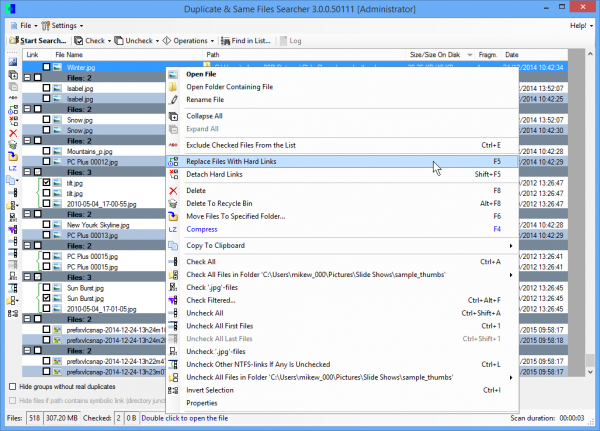
Unnecessary duplicate files can waste hard drive space and cause all kinds of odd PC issues, which is probably why there are so many programs designed to help you track them down.
Duplicate & Same Files Searcher sounds like it's just going to be yet another "me too" duplicate finder, but no -- there are some interesting differences, and they're obvious from the very beginning.
We were expecting adware, for instance, and the program's 427KB download was an immediate red flag. It had to be an installer which would grab the real code -- and assorted other junk -- from elsewhere, right?
Well, no. There's no adware and no installation required, just a compact free-for-personal-use executable which you can run when and where you like.
One limitation is that the program locates files with identical content only; unlike some similar tools, you can't compare files just on their names, dates or size. This makes Duplicate & Same Files Searcher relatively slow, as it must read and process every single file in your selected group.
Fortunately there are some ways to improve performance. You can direct the program to scan a particular folder tree only (C:\Users\MyName), to examine files of a particular type (*.mp3, *.jpg), to ignore others (*.iso, *.exe), to check only files of a defined size.
There are some options you won’t often see elsewhere. You can have the program check for (or ignore) differences in alternate data streams, to ignore different ID3 tags in MP3s, to skip symbolic links (or not).
When the scan is complete, each set of duplicates is listed, along with their file names, paths, size and dates. You even see their number of file fragments, which we weren't expecting. But if you don’t care which duplicate you keep, being able to delete the most fragmented is a small plus.
There's a very lengthy context menu. Right-click a file and you're able to open it, launch Explorer at its containing folder, delete, rename, or copy it to your clipboard.
Once you've selected the files you don’t need, you can have the program delete them all, compress them, or move them to a folder somewhere.
Perhaps best of all (if you know what you’re doing) there's even an option to replace the files with hard links. This means you can have a single file referenced by multiple paths on the same volume, so for example the hard links C:\Here\File.dll, C:\There\File.dll and C:\Everywhere\File.dll would only require the file space for one copy of File.dll.
Duplicate & Same Files Searcher isn’t for NTFS beginners, then, but if you’re a Windows expert then there's plenty here to enjoy. Go take a look.

